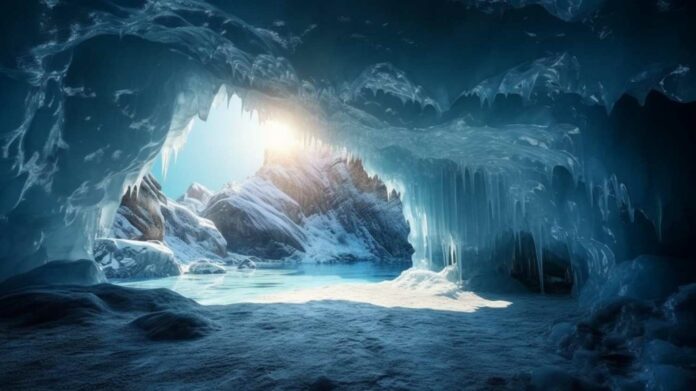The Sturtian “Snowball Earth” glaciation, which happened around 717 to 661 million years ago, is considered one of Earth’s most severe periods of cold climate. However, what caused this long-lasting global ice age remains obscure or how it was sustained.
A new study by Australian geologists aims to enhance the understanding of the functioning of the Earth’s built-in thermostat that prevents the Earth from getting stuck in overheating mode. Using plate tectonic modeling, geologists determined What made Earth a giant snowball 700m years ago?
The idea for this research came during a field trip to the Flinders Ranges, where scientists aimed to understand how volcanic activity might have caused Earth to become a frozen planet during the Sturtian glaciation.
The study’s lead author, ARC Future Fellow Dr Adriana Dutkiewicz, said, “Imagine the Earth almost completely frozen over. That’s just what happened about 700 million years ago; the planet was blanketed in ice from the poles to the equator, and temperatures plunged. However, just what caused this has been an open question.”
“We now think we have cracked the mystery: historically low volcanic carbon dioxide emissions, aided by weathering of a large pile of volcanic rocks in what is now Canada; a process that absorbs atmospheric carbon dioxide.”
Many theories have been suggested to explain what started and ended this immense ice age. Still, the most perplexing aspect is why it lasted for 57 million years – a duration challenging for humans to comprehend.
Their plate tectonics model depicts the changes in continents and ocean basins after the breakup of the ancient supercontinent Rodina. They linked it with a computer model that estimates the release of CO2 from underwater volcanoes along mid-ocean ridges – the areas where tectonic plates spread apart and new ocean crust forms.
They discovered that the beginning of the Sturtian ice age coincided precisely with a historic low in volcanic CO2 emissions. Moreover, the CO2 release remained relatively low throughout the entire duration of the ice age. The greenhouse gas concentration of the atmosphere was almost entirely dictated by CO2 outgassing from volcanoes and silicate rock weathering processes, which consume CO2.
Co-author Professor Dietmar Müller from the University of Sydney said: “Geology ruled climate at this time. We think the Sturtian ice age kicked in due to a double whammy: a plate tectonic reorganization brought volcanic degassing to a minimum while simultaneously, a continental volcanic province in Canada started eroding away, consuming atmospheric CO2.
“The result was that atmospheric CO2 fell to a level where glaciation kicks in – which we estimate to be below 200 parts per million, less than half today’s level.”
The study highlights concerns over Earth’s future. According to a recent theory, Earth would evolve towards Pangea Ultima, a supercontinent so hot that mammals might become extinct- over the next 250 million years.
Journal Reference:
- Adriana Dutkiewicz; Andrew S. Merdith; Alan S. Collins; Ben Mather; Lauren Ilano; Sabin Zahirovic; R. Dietmar Müller. Duration of Sturtian “Snowball Earth” glaciation linked to exceptionally low mid-ocean ridge outgassing. Geology. DOI: 10.1130/G51669.1
